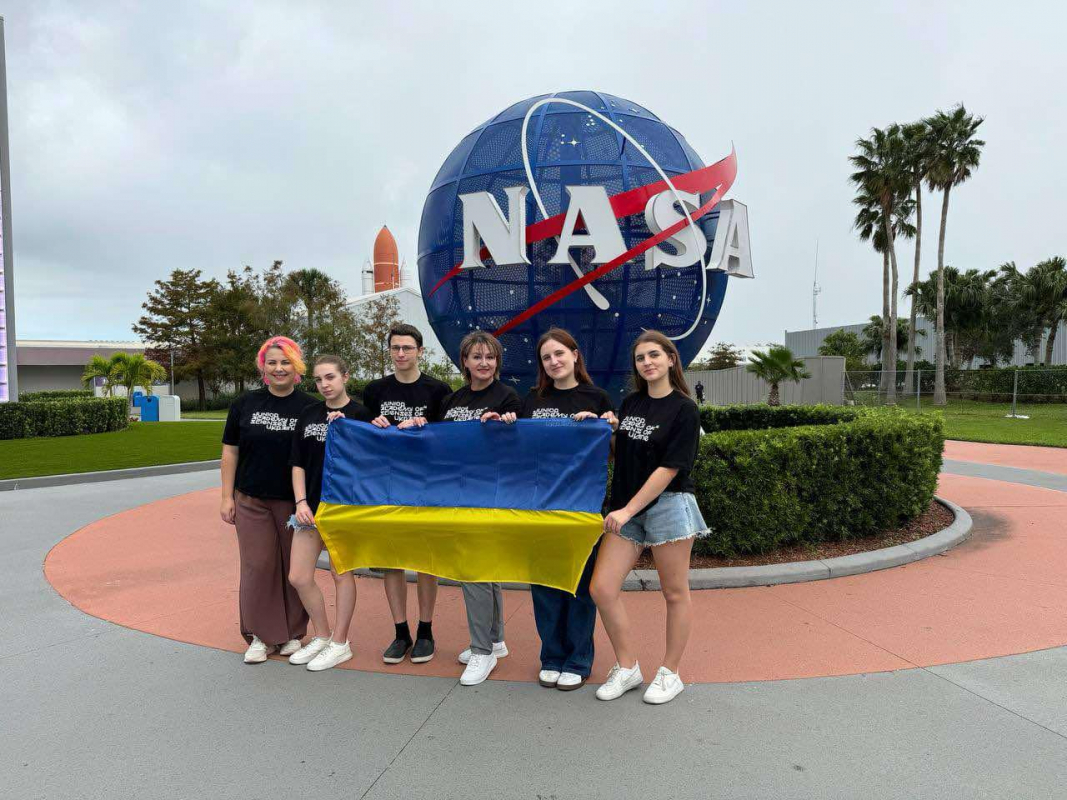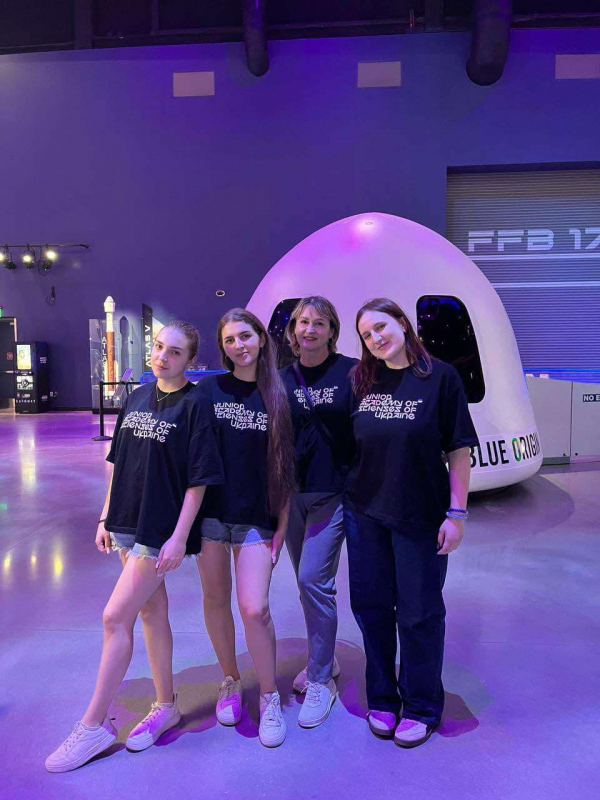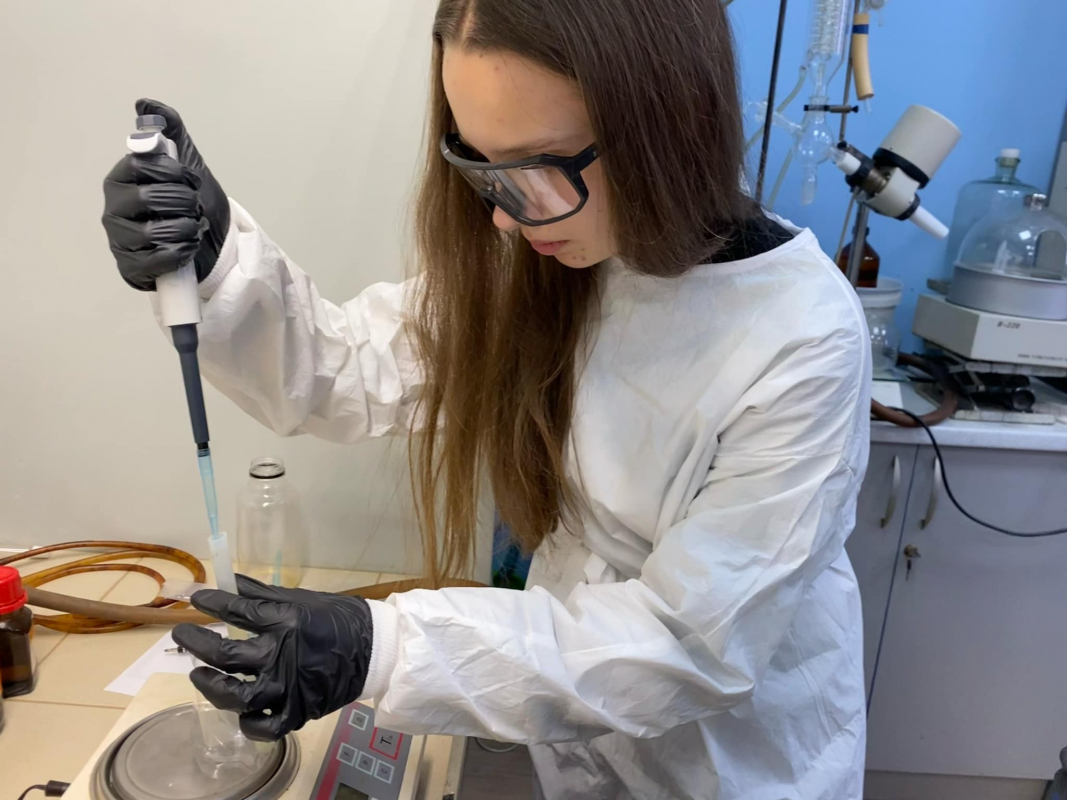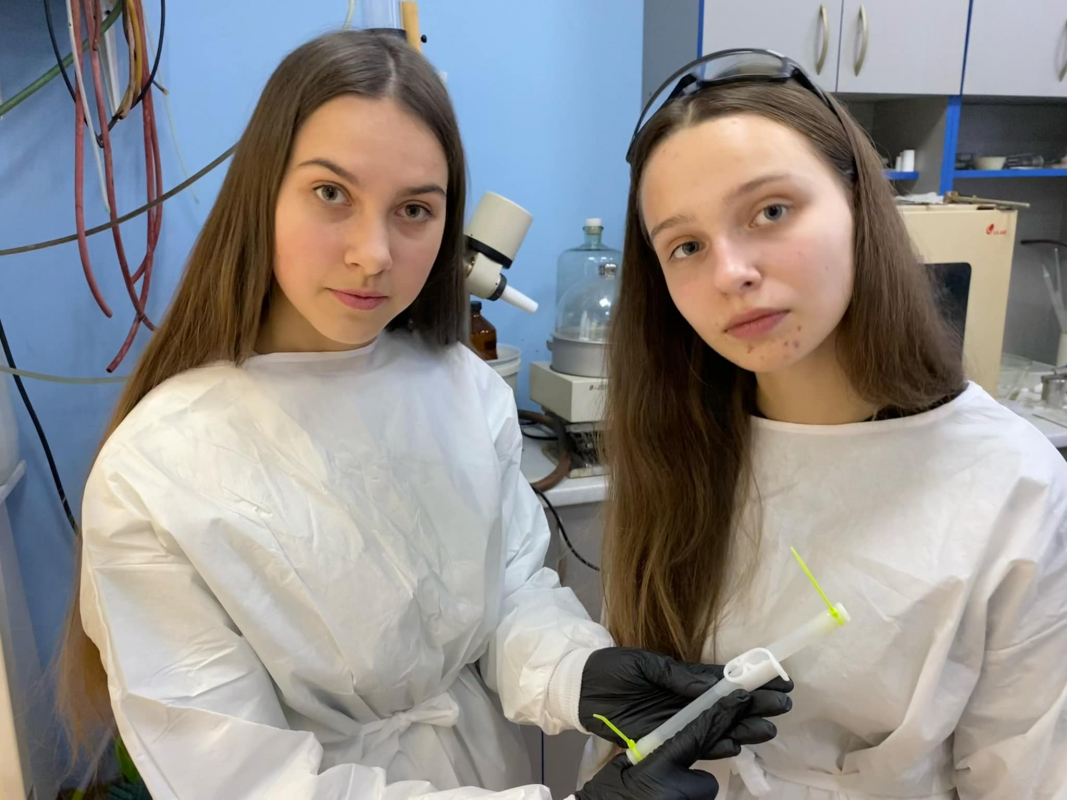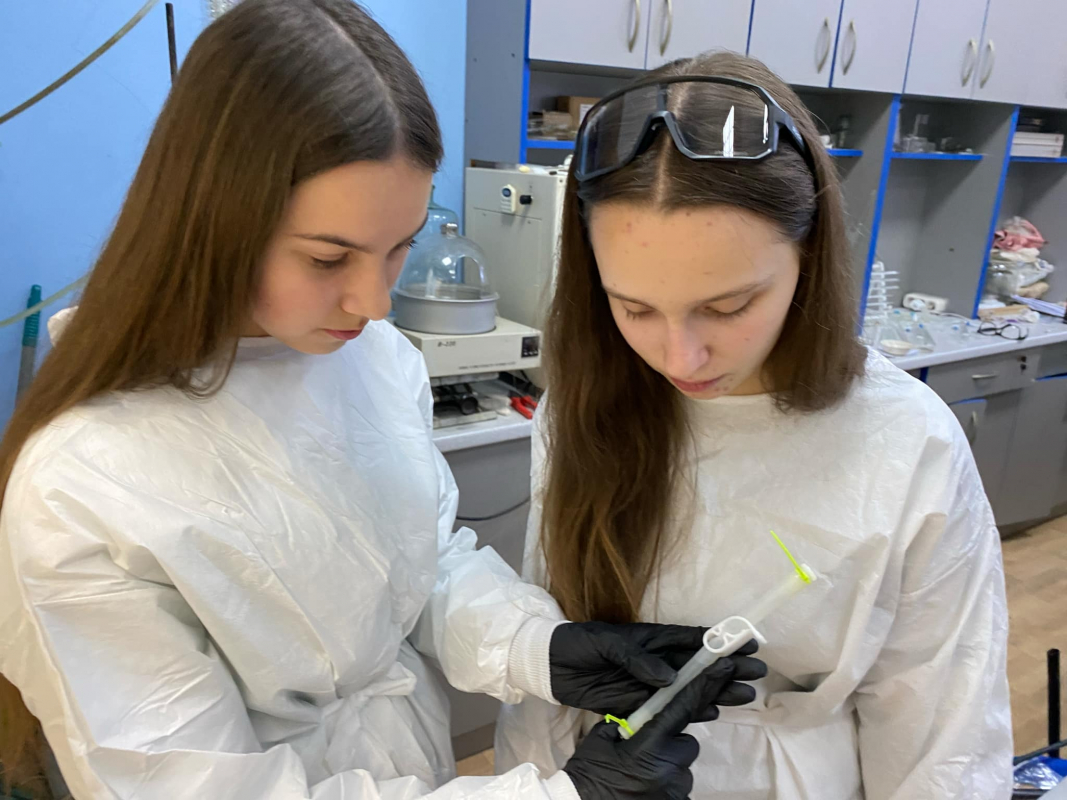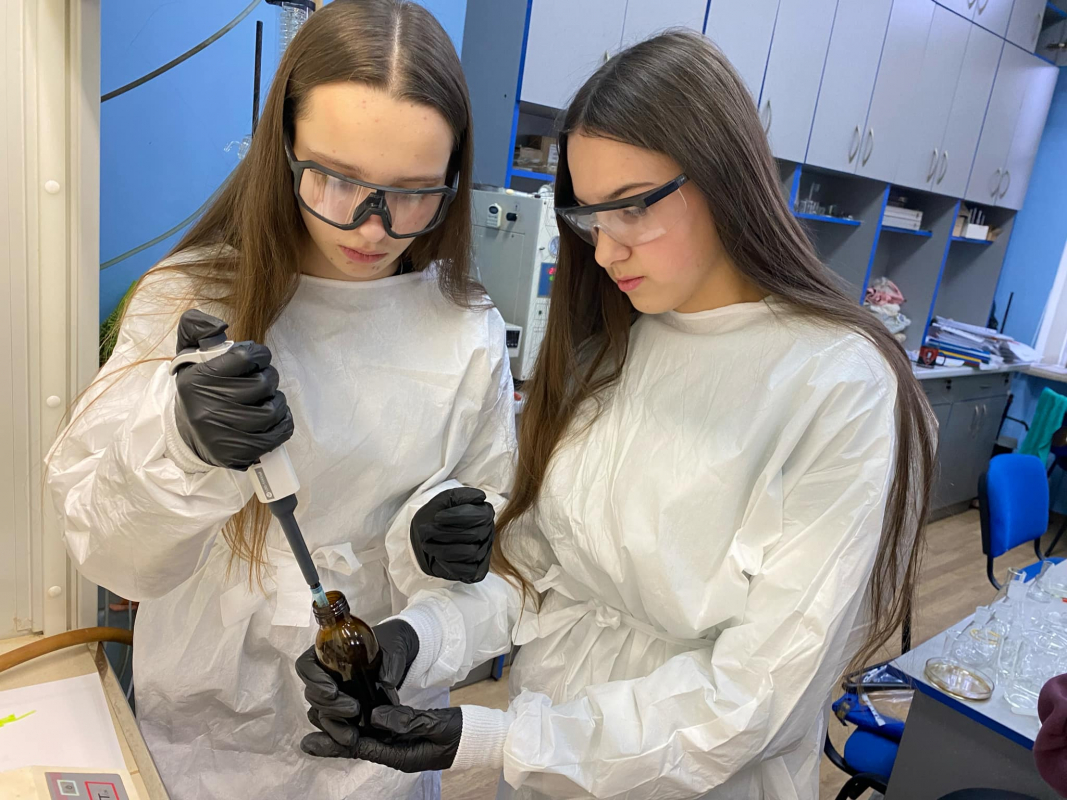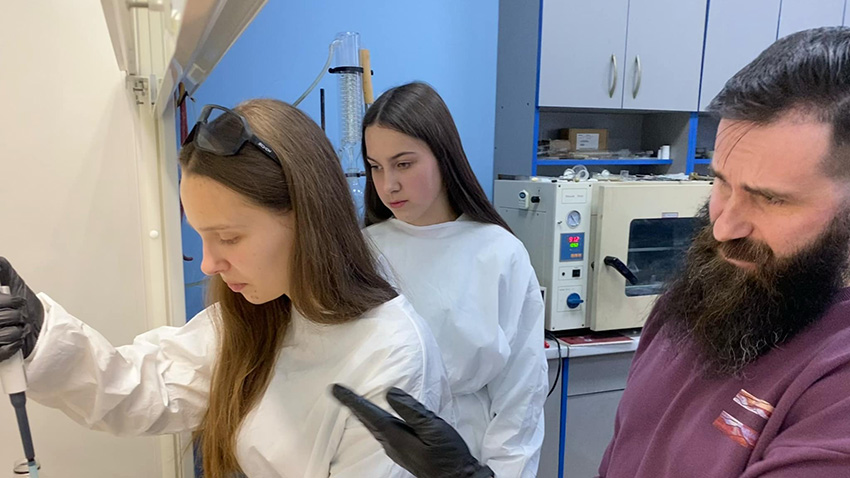Thanks to the involvement of high school students of Skole Secondary School No. 2 named after Stefania Vitruk in a unique comprehensive program for the development of science and STEAM education – SSEP (Student Spaceflight Experiments Program) – this year, the development of the second group of young scientists, who are supervised by Professors and Associate Professors of our University while working on their projects, will fly into space. Lviv Polytechnic provides the researchers with expensive materials for the experiment and equipment.
It is important to get children interested
The initiator and scientific supervisor of these competitions is Larysa Romanyshyn, a teacher of Chemistry, Physics and Biology, a graduate of the Faculty of Chemical Technology (now the Institute of Chemistry and Chemical Technologies). She once received an engineering degree at the Department of Chemical Technology of Plastics Processing, but realised that her calling was to work with children. In the autumn of 2024, as a finalist of the Top 10 Global Teacher Prize, she received awards in the Chemistry Teacher nomination from the pharmaceutical company Biopharma and in the STEM Teacher nomination from the KSE Foundation as part of the #TalentsForUkraine grant program, as for many years she has successfully managed to interest schoolchildren in chemistry, a subject not very popular among children, and to involve them in competitions and interesting contests of various levels. Among her students, there are those who have chosen chemistry as their profession and decided to study at Lviv Polytechnic. The teacher is creative in her approach to preparing lessons, often using game forms, modern digital technologies, and gamification, encouraging students to actively cooperate. She also emphasises to her students that in the near future, Ukrainian society will be in dire need of chemists, physicists, biotechnologists and engineers of various fields, not lawyers, economists or even programmers, who are in abundance today.
– When I say to the children: «Here’s a project, maybe let’s take part in it», many of them agree. Last year, we went international, gaining extremely high recognition from NASA. Then the international jury noted in its review: a perfect solution from a technological point of view.
One test tube has already returned from space
The first project of Skole schoolchildren Viktoriia Kavchak, Viktoriia Batko, Tetiana Malanchuk, Sofiia Rudenko and Maksym Shvets, which was chosen for space research, was about studying biomedical hydrogels. Larysa Romanyshyn notes that when choosing research topics, she suggests that her students take on interesting, important, but little-studied ones. These are the ones that have a chance to win.
An important condition for preparing a study is to involve professional consultants. Therefore, the teacher turned to her Department for help, knowing that it had both high-level researchers and the appropriate equipment. The first group of researchers is supervised by Professor Oleksandr Hrytsenko and Associate Professor Volodymyr Moravskyi. Thus, their active cooperation has been going on for over a year.
In early November 2024, the first development aboard the SpaceX-31 rocket successfully travelled into space. Then the team and their teacher were invited to Florida, where they visited the NASA Space Centre to see their mini-lab for microgravity research heading to the International Space Station.
– Our test tube has already successfully returned from space, and we at Lviv Polytechnic are continuing the final experiments, in particular, we are investigating the difference between the hydrogel that was polymerised in orbit under microgravity and the hydrogel from the laboratory, comparing their physical and chemical properties, finding out the effect of gravity on the polymerisation process, etc., and later we are going to send the final protocols to NASA, explains Larysa Romanyshyn.
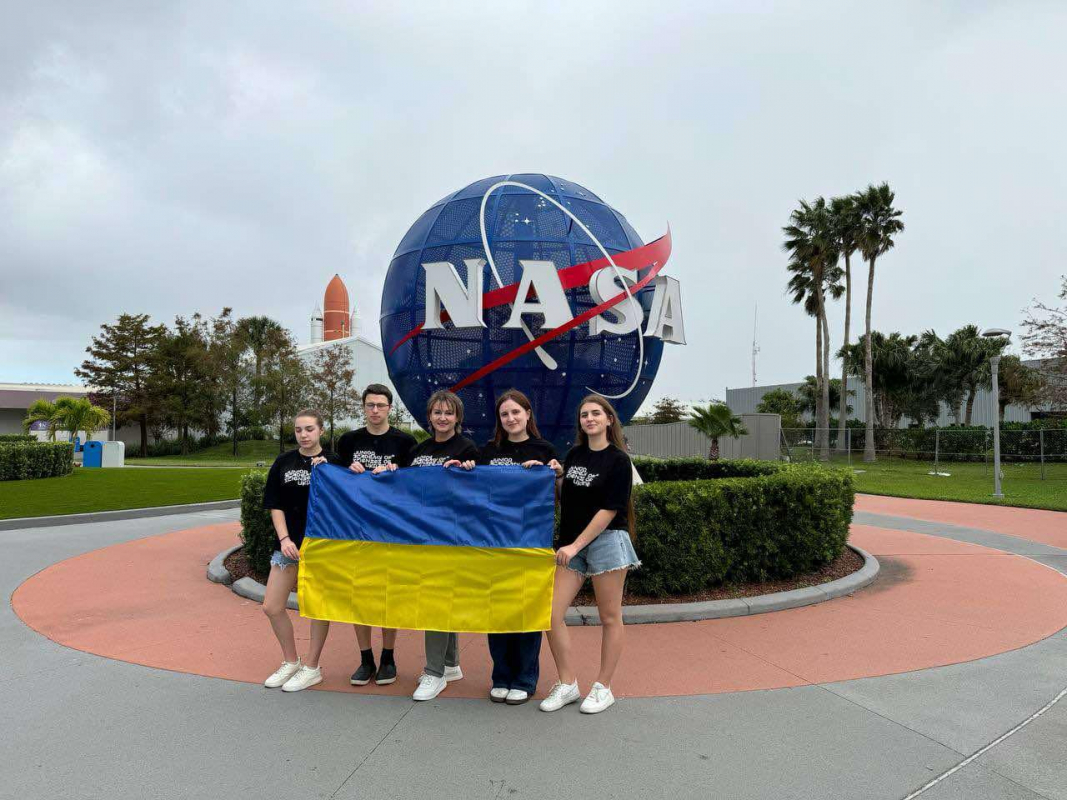
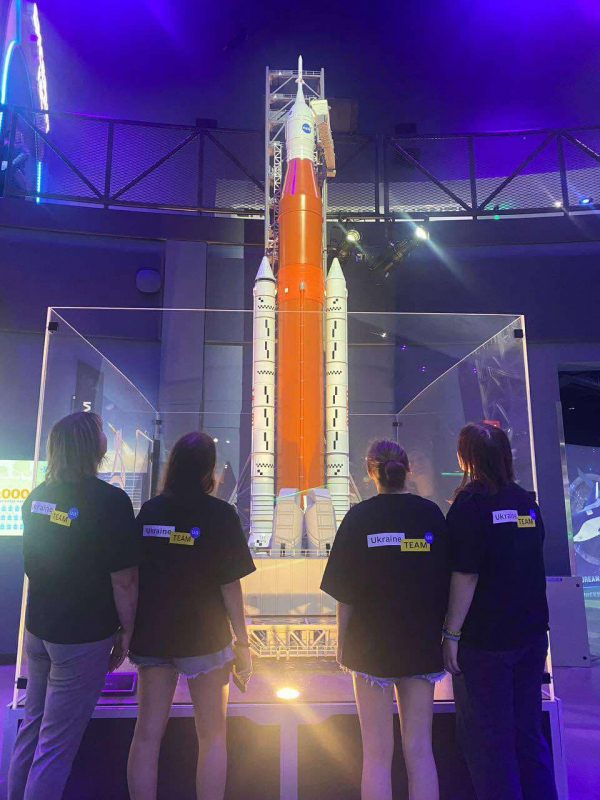
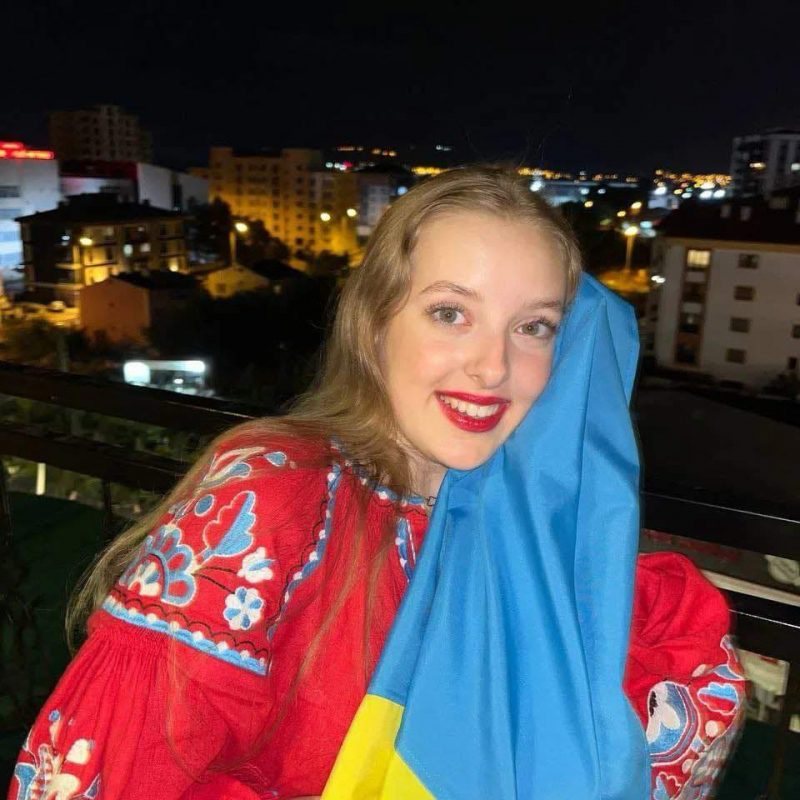
Novelty, environmental friendliness, and relevance are important
...When the teacher initiated a new NASA competition among her students, she admits that she did not have much hope for another victory, as one project had already won under her supervision, but as it turned out later, the main thing in the scientific world is the essence of the research, its significance, and not trivial formalities. Her students, Maria Poiasnyk and Khrystyna Yareminets, got her hopes up by eagerly starting to research the production of polyurethanes from renewable raw materials for the use in astronautics as insulation materials.
– Polyurethanes have a foamy structure and can be used as an insulating material. Every spacecraft that goes into orbit carries several tones of polyurethane on board in its skin. Therefore, our project is of great interest to American scientists. Its novelty is that it is environmentally friendly, as we work with renewable raw materials, says Larysa Romanyshyn.
The work also turned out to be quite painstaking, requiring time and effort, although it was progressing faster, as the previous experience had improved the skills. This time, Sviatoslav Polovkovych, Professor at the Department of Technology of Biologically Active Substances, Pharmacy and Biotechnology, and Associate Professor Andrii Karkhut became the students’ scientific advisers.

The faculty of the Institute of Chemistry and Chemical Technologies say that it is interesting and easy for them to work with schoolchildren as they have a goal to successfully implement their projects and are ready to make efforts to improve their research and achieve high results.
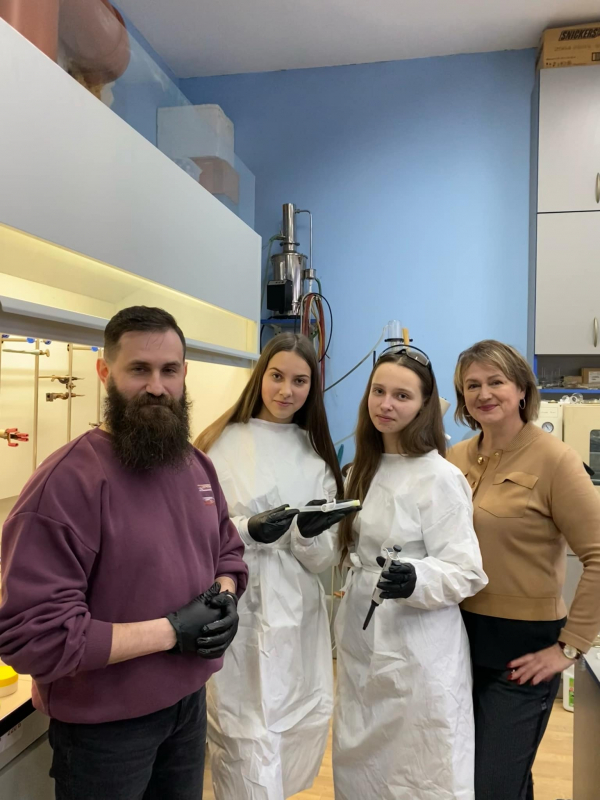
The benefactor was found in a few hours
Of course, not everything worked out right away, but joint efforts, patience, and perseverance yielded results. This research project came first at the All-Ukrainian School Space Experiment Competition SSEP, which took place from September to November 2024. Back then, 30 school teams from all over Ukraine competed for the opportunity to send their mini-labs to the international space station for research in microgravity. In November-December, at the second stage of the competition, the experiments of the nine finalists were already evaluated by the American jury from NCESSE and SSEP. Skole schoolgirls were among the winners. According to NASA experts, their project is «one of the best in the history of the SSEP competition».
This time, the Department also provided the young scientists with the necessary reagents. In general, when evaluating the works, the jury takes into account their safety, the absence of toxic substances, and such materials are not cheap. And when the results showed that the experiment had a chance to be improved, Larysa Romanyshyn turned to various sponsors with a request to finance the purchase of an expensive reagent, 20 grams of which cost $730. With the help of the Educational Initiatives Foundation, a benefactor was found in just a few hours. It was the digital company Accord Group. So, the students continue their research in the laboratory of the Department of Technology of Biologically Active Substances, Pharmacy and Biotechnology. The development is scheduled to be launched into space at the end of 2025.
– I am pleased that we can thus declare Ukraine as a high-tech country at the global level. It is important for us that someone, after the completion of our projects, will start to produce our hydrogels as well as polyurethanes, sums up Larysa Romanyshyn.
